The Chuwi LapBook 14.1 Review: Redefining Affordable
by Brett Howse on March 10, 2017 8:00 AM ESTDesign
One area where Chuwi has done very well, especially for this price point, is the design of the LapBook 14.1. The entire laptop is unsurprisingly made from plastic, but the plastic has a nice textured feel to it, making it very easy to hold, and it never feels like it’s going to slip out of your hands. The white color is a nice change from the traditionally black or gray PC market as well.
Since this is an Atom core, the laptop doesn’t need a fan, which of course makes the device silent, and, at least on the review sample, there isn’t any coil whine perking up over the lack of fan noise. The bottom features four nice large rubber feet, making the laptop stay planted on a desk or table, and while it may seem silly to mention this, there are still laptops that don’t get this right.
Opening the laptop up, the thin bezels on the display really stand out, and allow the LapBook 14.1 to feel smaller than most 14-inch notebooks. The thin design, starting at 9 mm at the front and tapering to 20 mm at the back, make it very easy to stick in a bag and carry with you. It’s not the lightest design around, but the overall construction is solid enough that there isn’t any creaking when holding the laptop on a corner. Considering the price, the construction is solid.
The keyboard is also surprisingly good. It’s nice to see a black keyboard on this laptop, since it gives great contrast to the white system, and makes the keys easier to see. Hopefully no one is shocked that this laptop does not offer any sort of keyboard backlighting, which is unfortunate, but to hit these kinds of price points, it has to be expected. Key travel is also quite good, and the keyboard feels quite solid, with a much better key feel than I would have expected at this price, and at this thin of a laptop. Chuwi hasn’t stuck with a normal keyboard layout though, and they’ve made the same mistake as some other manufacturers in placing the power button as one of the keys. Having the power button where Delete should be is never a good idea, and can easily cause you to shut off the computer when trying to edit something. It also starts a chain reaction on key placement, because Delete must be somewhere, and in this case, it is above the enter key, forcing the \ key beside the space bar. Although you could likely get used to this, if you ever switch between machines, having keys in odd locations is likely going to cause you frustration, and it would be best if Chuwi would move power off the keyboard.
The trackpad is another story though. It’s not a very good trackpad, and the customization for it is very limited with the included drivers. The default scroll direction is reversed from normal, with no way to change it, and you can’t disable the trackpad with a keyboard shortcut either. For simple operations, it’s acceptable, but if Chuwi wanted to focus its energy somewhere to make the experience better, this would be an easy place to start. The notebook would be better used with a mouse, if possible.
There’s not a lot of expansion, with just a single USB-A 2.0 port on the right, and a single USB-A 3.0 port on the left, along with mini HDMI and micro SD, and a headset jack. The power is supplied via a barrel connector, which doesn’t look very robust. It would have been nice to see USB-C power, although that may not be possible at this price point. My experience with thin barrel connectors is not great though, since they can get bent, or snapped off, and finding a replacement is not always simple since they are not always the same size. It’s also worth mentioning that the USB ports are upside down as well, which is not a huge deal, but it’s a bit weird when trying to plug something in.
Overall, Chuwi has done a decent job on the LapBook 14.1. The design is solid, with a pleasant look and feel, and while it can’t compete with all-metal notebooks, it’s really not meant to. The plastic feels decent, and the matte texture really helps.


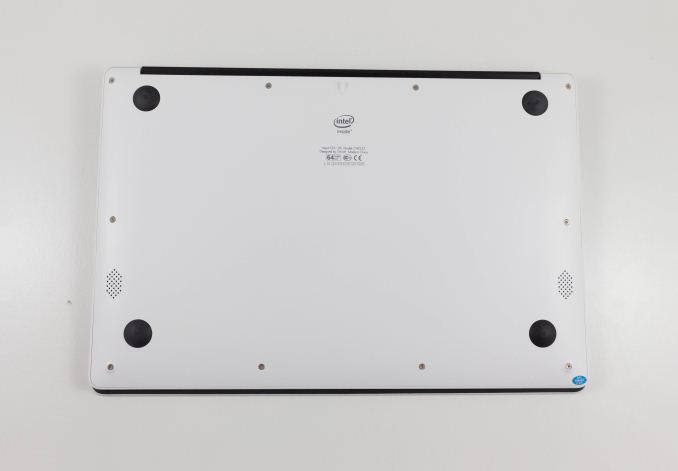
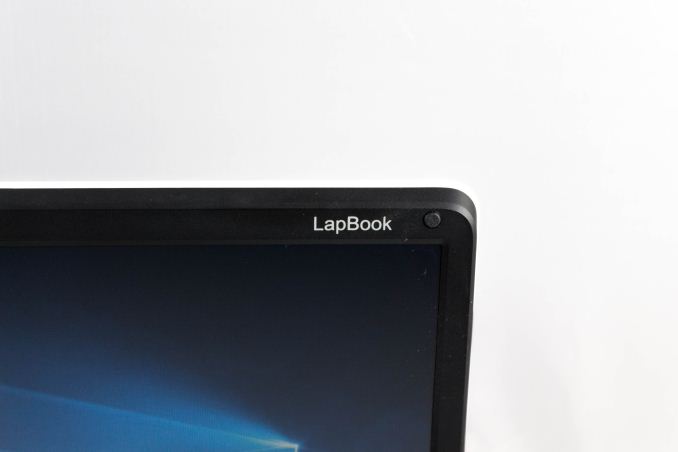
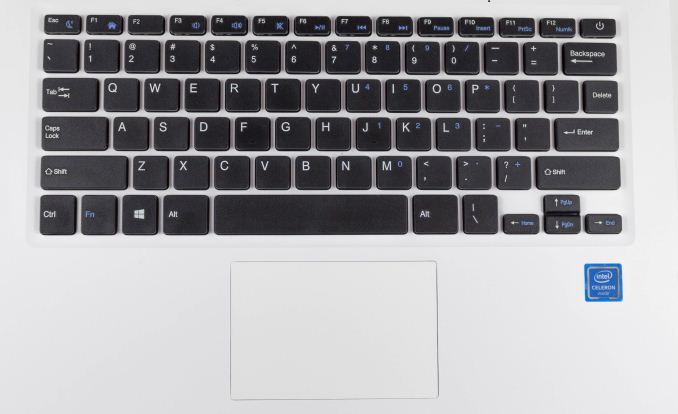
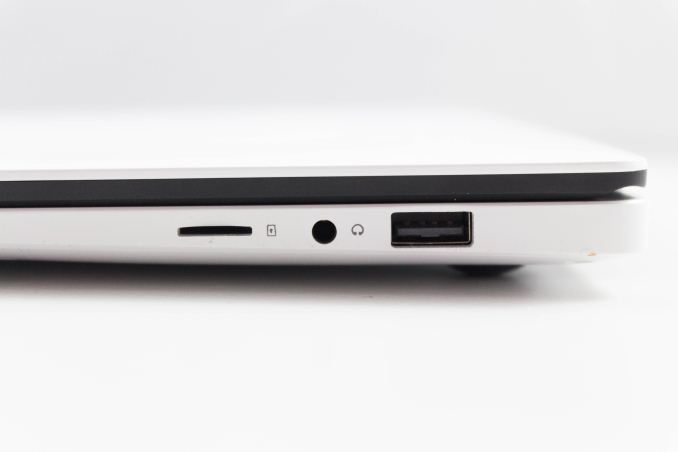
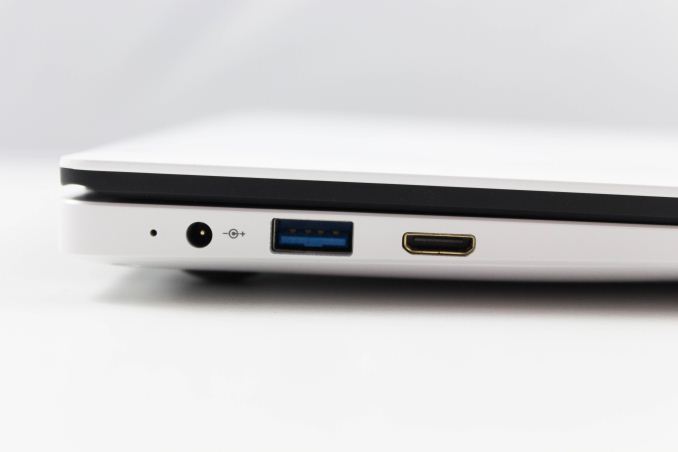








75 Comments
View All Comments
BrokenCrayons - Friday, March 10, 2017 - link
Chuwi hits all the right specifications for RAM and storage space that I'd like to see in a budget laptop and being fanless is nice too. I'd actually prefer a 11.6 inch screen and a 1366x768 screen because, for a small and cheap portable, 14 inches is actually more than I'd need and I'd rather push fewer pixels with the relatively weak GPU. Some of the touchpad and heat concerned expressed in the Amazon review section are a bit off-putting as well and I don't like an all white system. I just with HP would offer up a 64GB version of their Stream 11. If they did, I'd be falling all over myself to buy one.DanNeely - Friday, March 10, 2017 - link
According to what I found the really cheap windows license comes with a 32GB SSD requirement from MS. Assuming that's still the case 64GB would require HP to charge nearly $100 more for $10 of hardware, Chuwi is probably cheating MS to hit this price with 64GB.http://www.cnx-software.com/2016/09/02/hardware-re...
Bullwinkle J Moose - Friday, March 10, 2017 - link
Doubtful that 32GB is really an MS requirement but more likely the minimum recommended size for a boot driveI've restored Win 8.1 32-bit to 16GB and 64-bit 8.1 to 20GB boot partitions before
32GB is likely the smallest SSD boot drive you will see in actual use
If I had problems booting Windows from the internal M.2 slot, I would run Windows to Go from the USB3 port which is fast enough for this class of processor and can then easily switch to a Linux thumb drive whenever I like
A 256GB Corsair GTX thumb drive would boot Windows a hell of a lot faster than that internal 64GB eMMC drive anyway and provides better security for my data
For example, anyone stealing the laptop would have an empty internal drive while my data remains safe in my pocket until the insurance replaces the hardware
DanNeely - Saturday, March 11, 2017 - link
I'm pretty sure it's legit. That was just the 1st cite I found, but matches what I've seen a few other places since W10 launched. MS has offered heavily discounted windows installs to low end computers since the initial linux based netbooks appeared almost a decade ago. In one way or another they've always limited it to the lowest tier of systems. The fact that mainstream makers either don't offer 64GB varients or charge prices significantly above the cost of the extra flash (eg the HP stream is $200 vs 260 on Amazon) is strongly suggestive that its where they're currently setting the cutoff.32GB is restrictive enough (to the extent of causing problems with major win10 updates) that I wish MS would raise the limit to 64GB; but I haven't seen any evidence that they have. Other than that, the numbers are IMO reasonable for the netbook class system that have always been the targets of the program.
dragosmp - Friday, March 10, 2017 - link
Would you test the Asus 402 and 403 ? In a similar sort of vein, they're apparently marketed as "premium budget notebooks" and go for 250-350$. The difference is the 403 is 1080p and the 402 is 768p.I think this category has some potential. If I found a 4GB/1080p e403 in the UK I'd buy one now.
crimson117 - Friday, March 10, 2017 - link
I'm really hoping this laptop makes a Chewbacca sound when you open the lid.andychow - Friday, March 10, 2017 - link
In the registry, change the ExcludeFromCPL value for windowslogon to get the option in the sound panel, or just replace the windows logon .wav file directly.pattycake0147 - Friday, March 10, 2017 - link
Or provide you with some chewy granola bars in the box.wolfemane - Friday, March 10, 2017 - link
Nice! Very cool to see a review of this cool little device!!! I got one of these for my wife this past Christmas. Was on a flash sale @ Newegg for $200 and she really wanted a super cheap 2 in 1 type system that supported micro sd. Before recovering it I had 0 faith in the product at that price and really thought a far more expensive known brand would be better for what she was going to use it for. Boy was I wrong. Other than our main computers it's the single most used device in the house. A bit heavy, but works far better than I would have ever expected of such a cheap device. Color accuracy of the screen is the shining aspect of this little machine. The color accuracy is so good, and the performance is good enough to do basic quick photoshop work, that my wife now uses it to give clients "sneak peaks " post photo op.coder111 - Friday, March 10, 2017 - link
How well does this run Linux?Is there a version with Linux preinstalled?